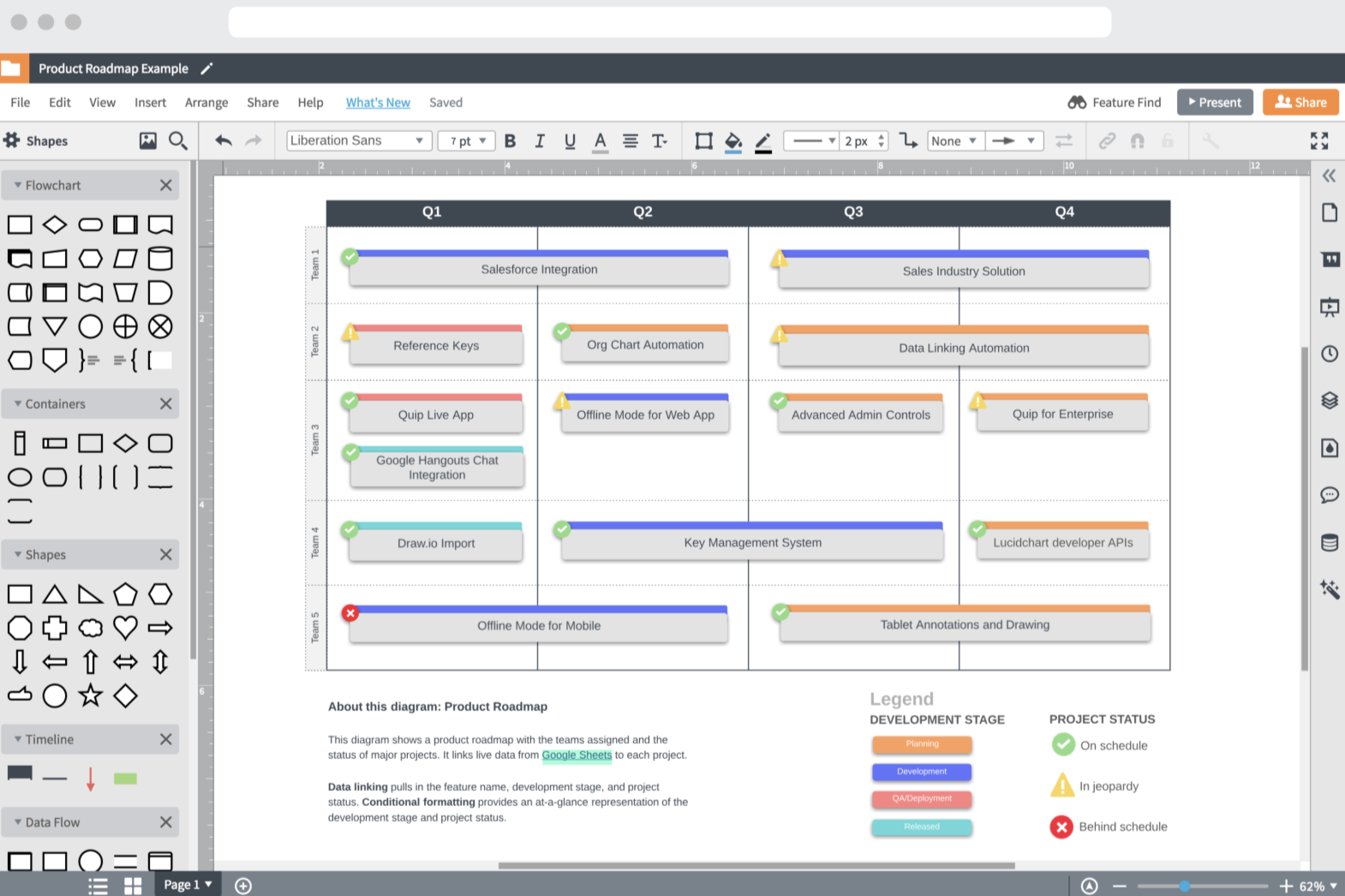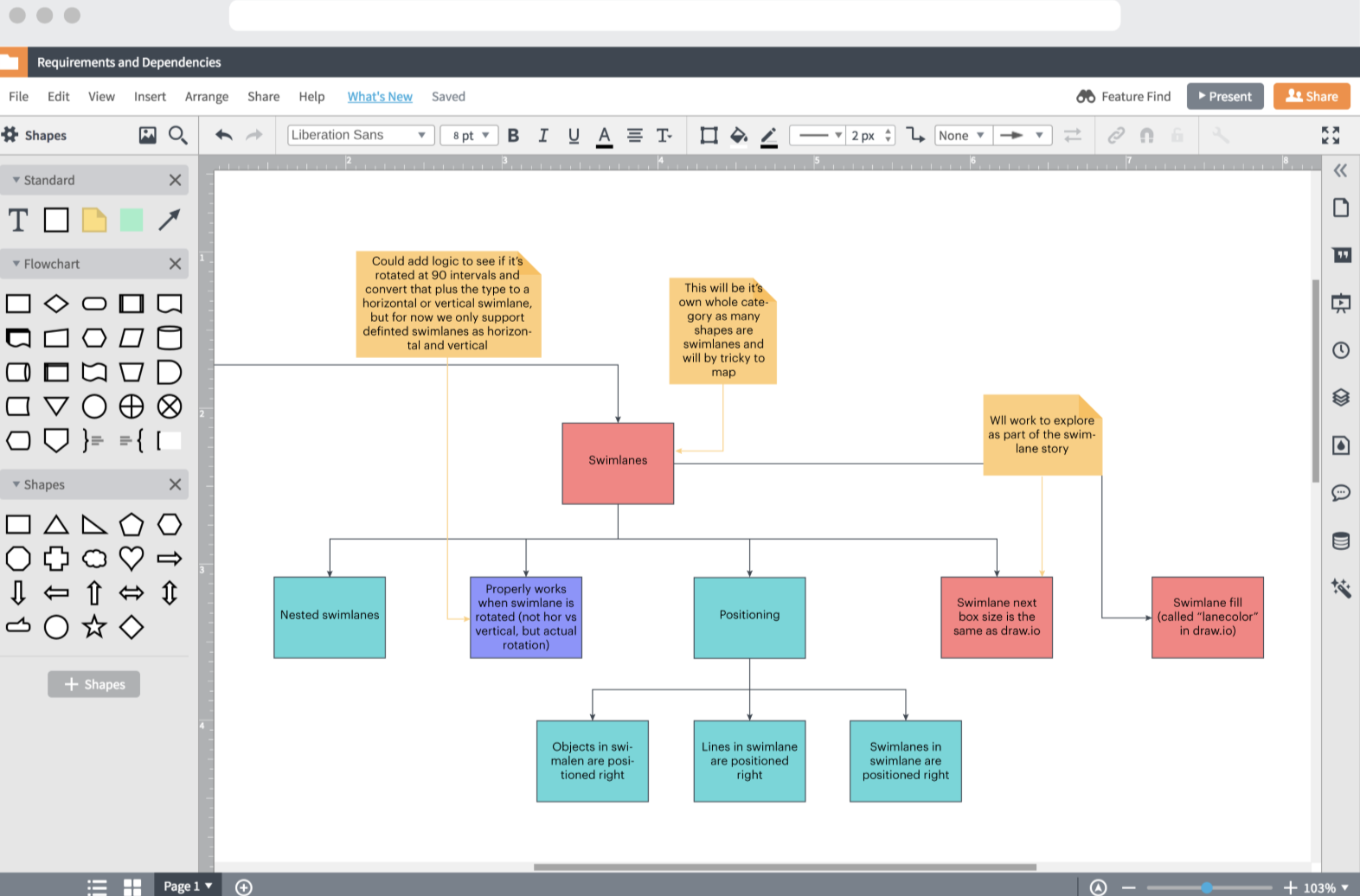
Simply drag and drop a shape into the workspace. You can quickly add ideas to the Lucidspark canvas in several ways.

This keeps the workspace clean and unintimidating while you’re brainstorming, yet gives you plenty of options when you’re ready for them. It enables you to change note color and shape, adjust the font and formatting, add links, emojis, tags and comments to them. Note formatting is done via a pop-up menu that appears when you have a note selected. On the left side of the workspace, a simple 6-button toolbar gives you access to the application’s brainstorming tools – sticky notes, 16 types of shapes, a connector line tool and a pen for freehand drawing. Both options do a great job of orienting new users to the Lucidspark experience. It also gives you the option to open a 60-second video overview of the application. For them, Lucidspark offers to open one that already contains a simple brainstorming project. Some users aren’t comfortable staring at a blank workspace, for example. Here, you begin to see Lucid’s emphasis on user experience design. A dialog box welcomes you to begin brainstorming using the Lucidspark toolset.

When you first open Lucidspark, what you immediately notice is that it shares a workspace with Lucidchart.

A case in point is Lucidspark, a new web-based whiteboarding tool recently launched by Lucid, the developer of the popular web-based diagramming tool Lucidchart.Ĭompared to sophisticated, note-based collaboration tools like Mural and Miro, Lucidspark offers a simplified, well-designed experience that enables small teams to quickly get up to speed brainstorming, developing their ideas and taking action on them. As the global pandemic continues to force teams to develop new practices and processes for working remotely, their tools must also evolve.


 0 kommentar(er)
0 kommentar(er)
